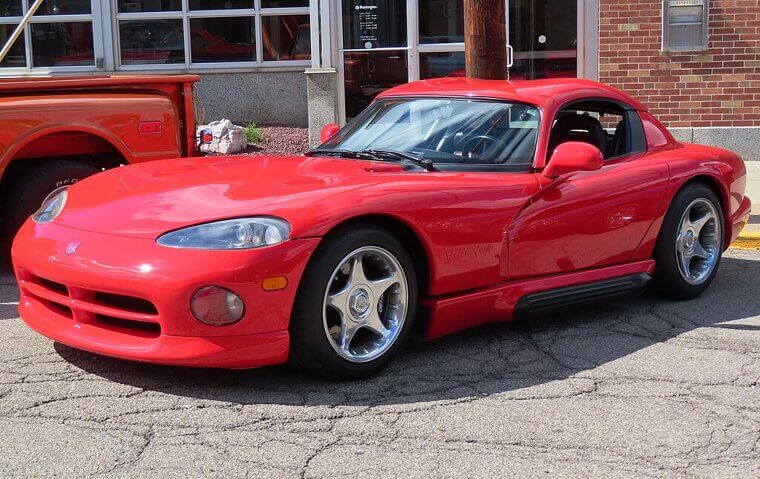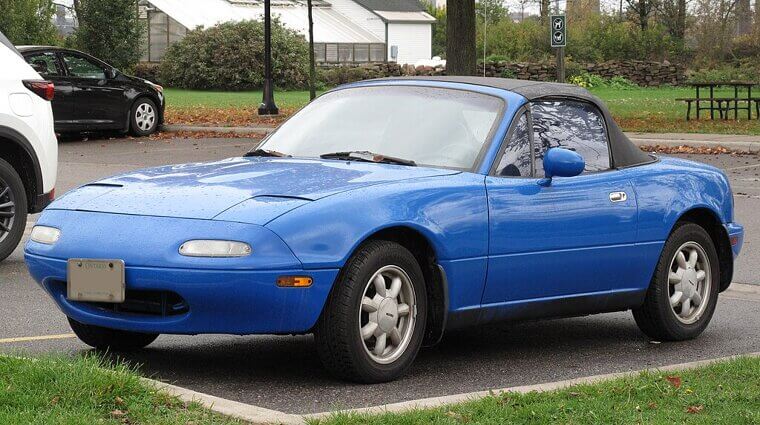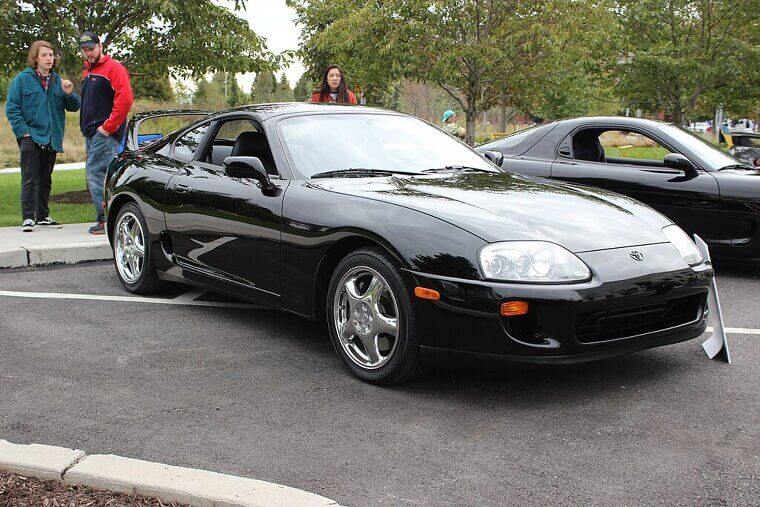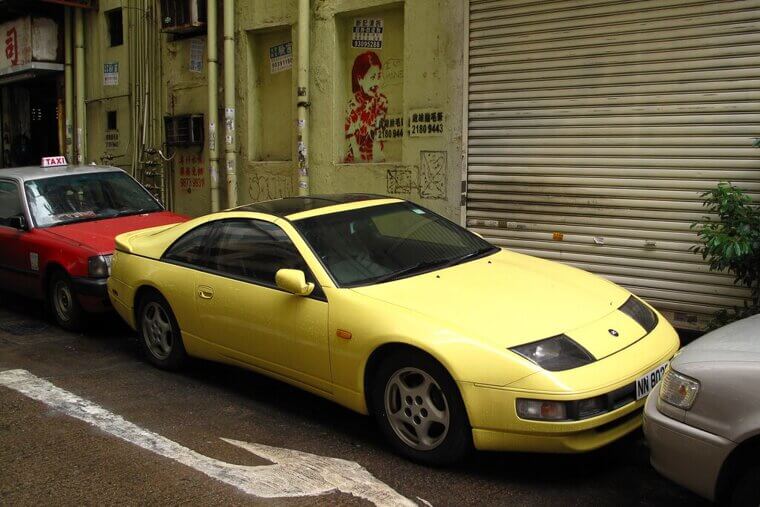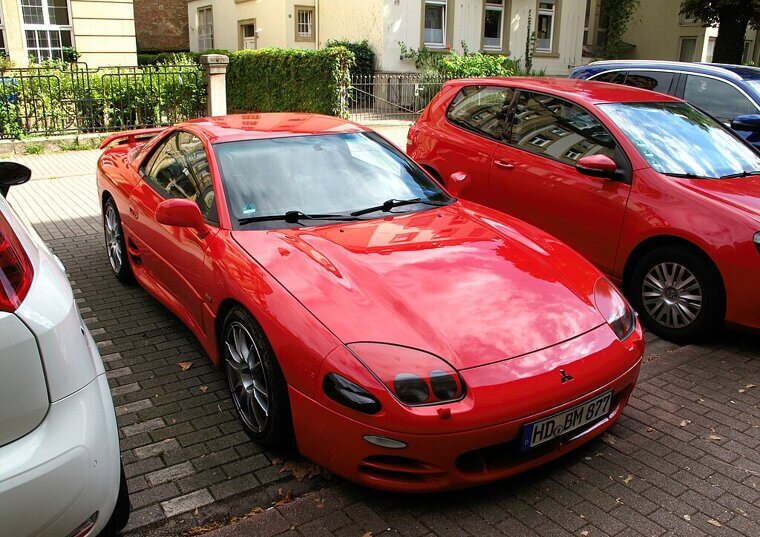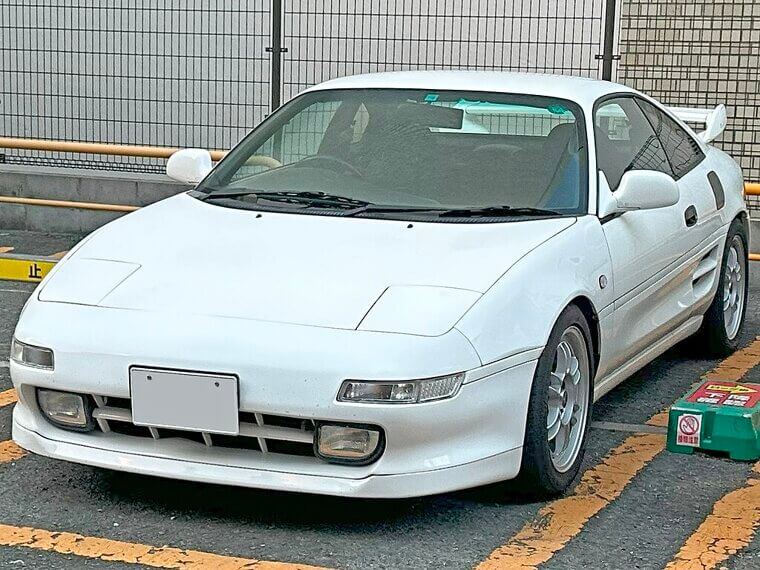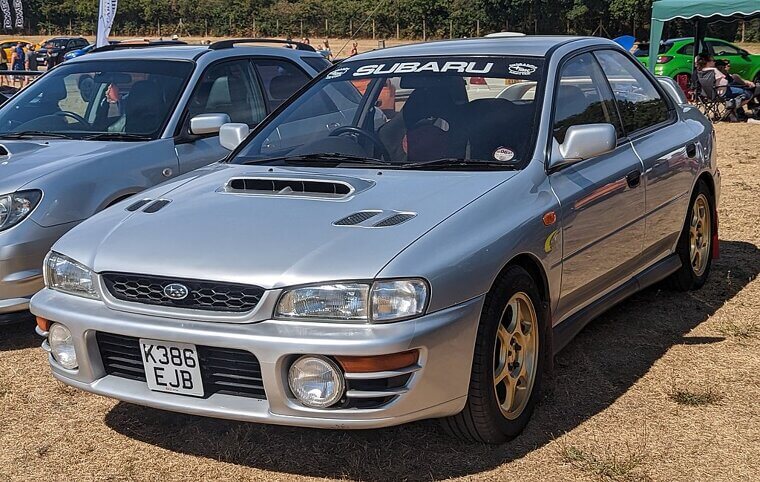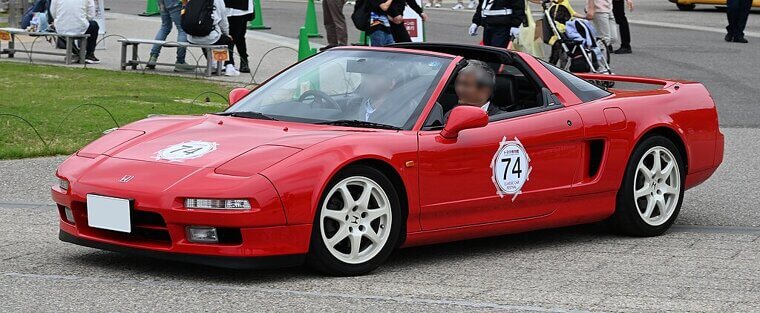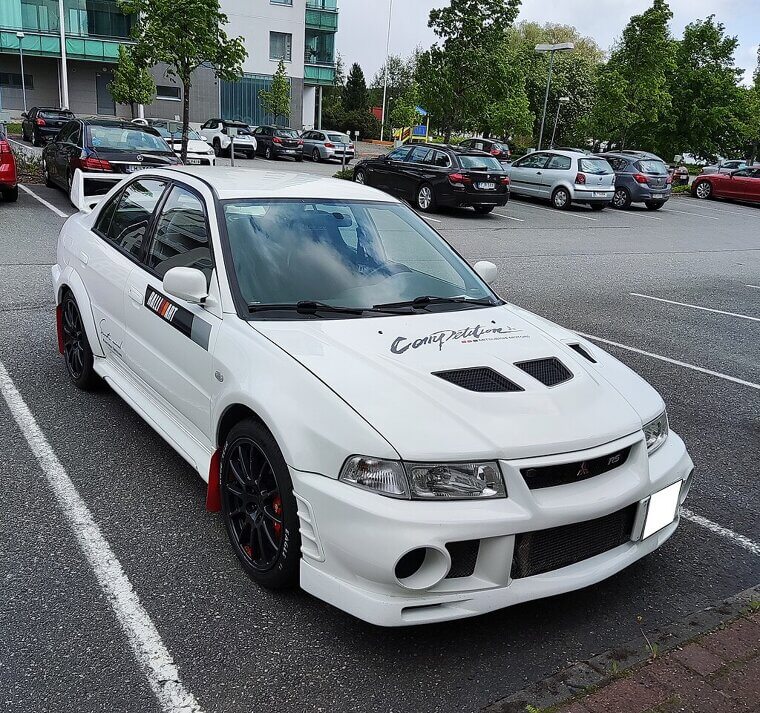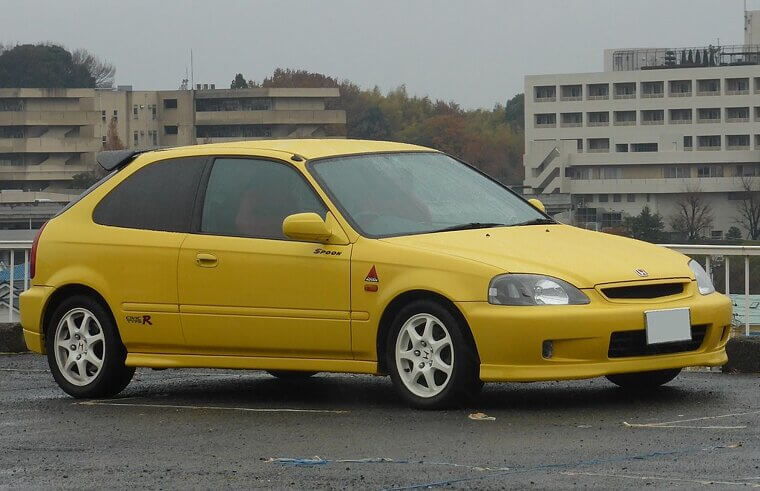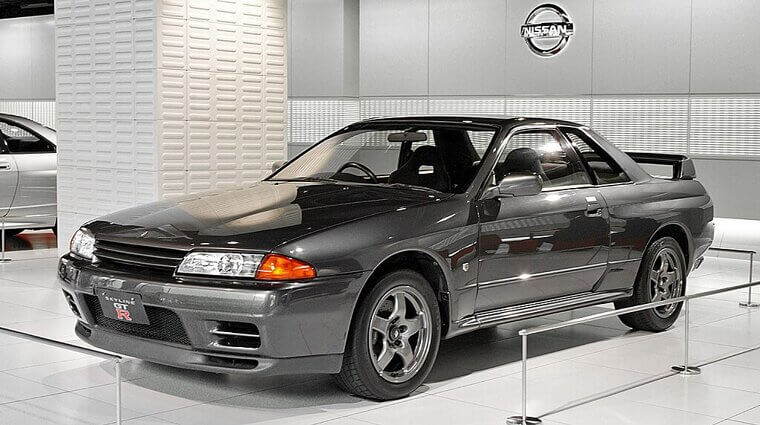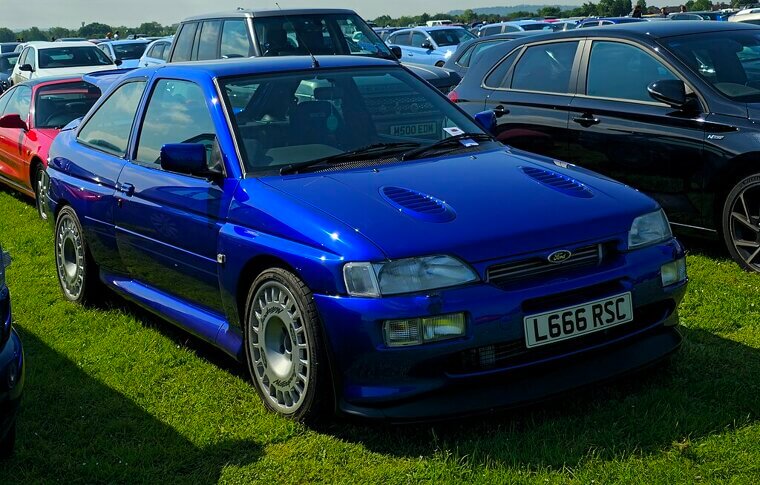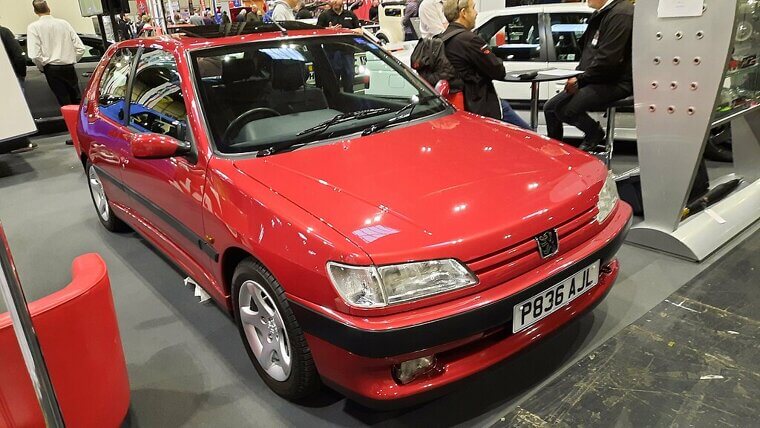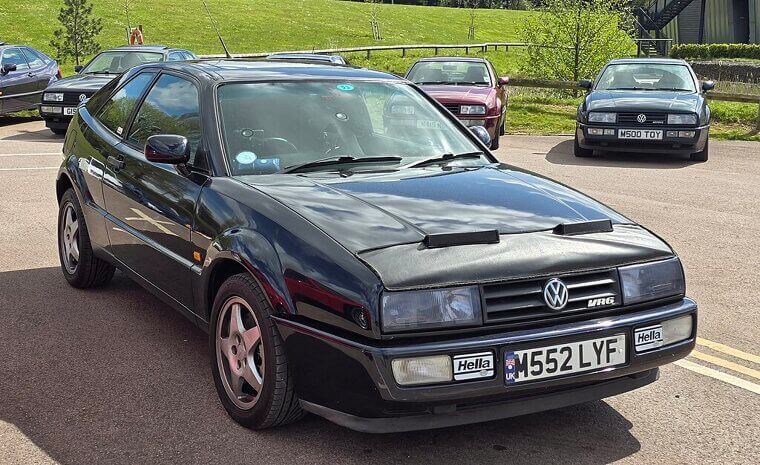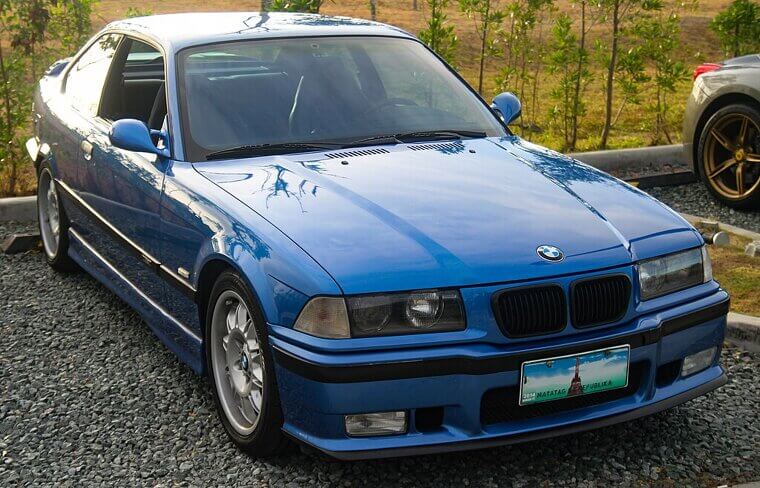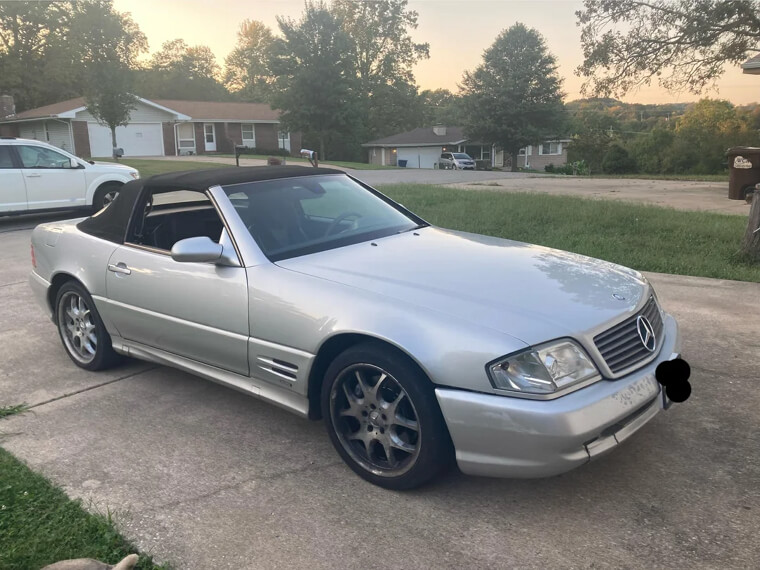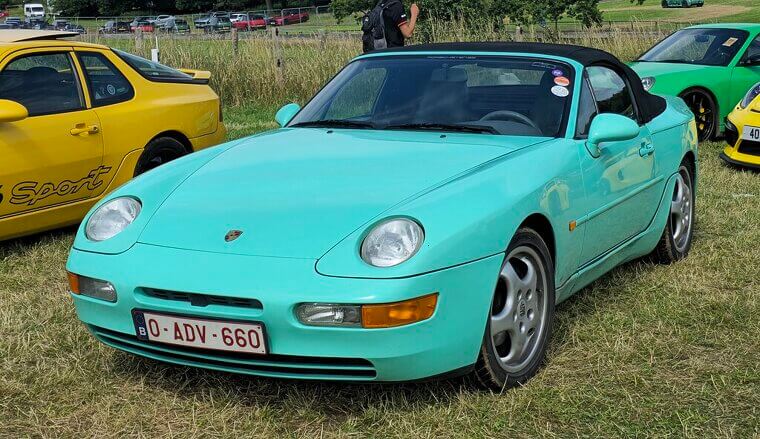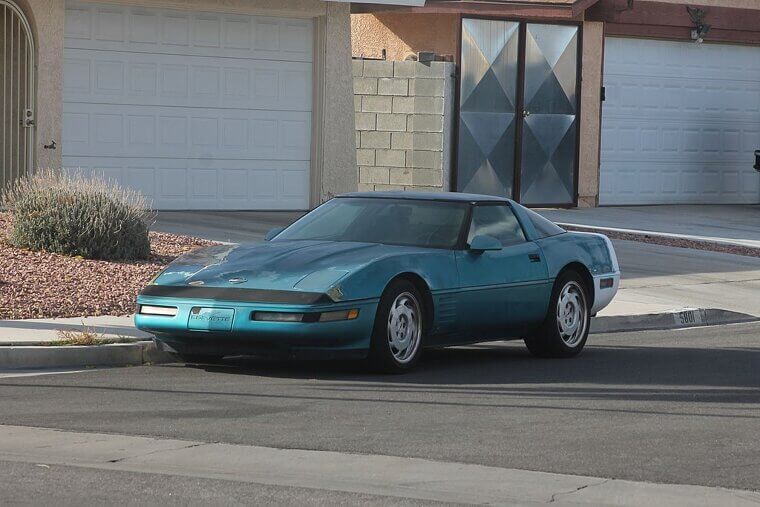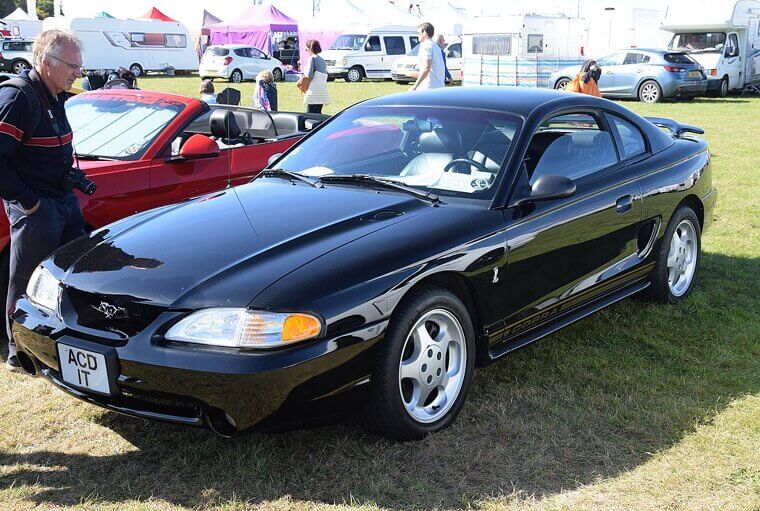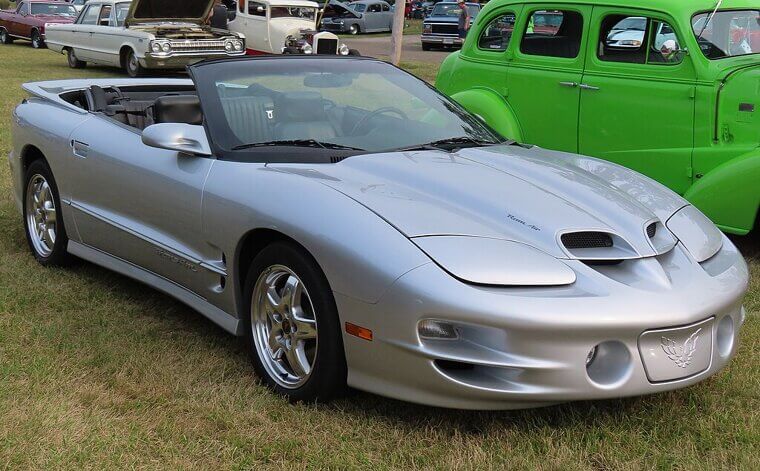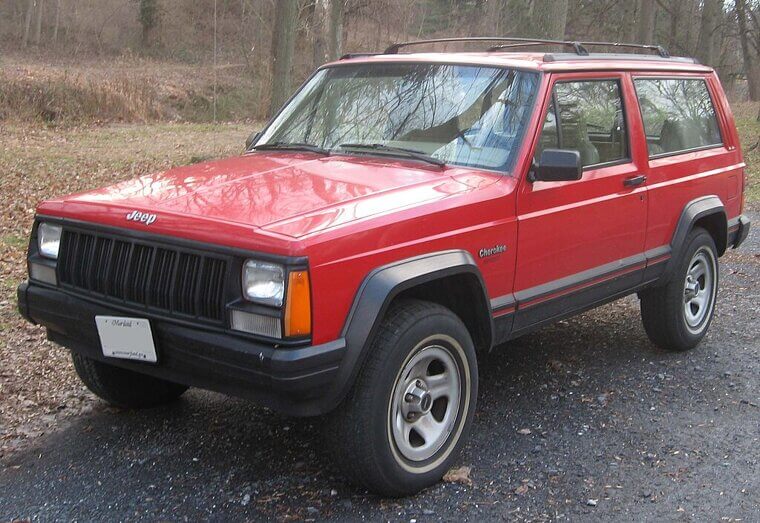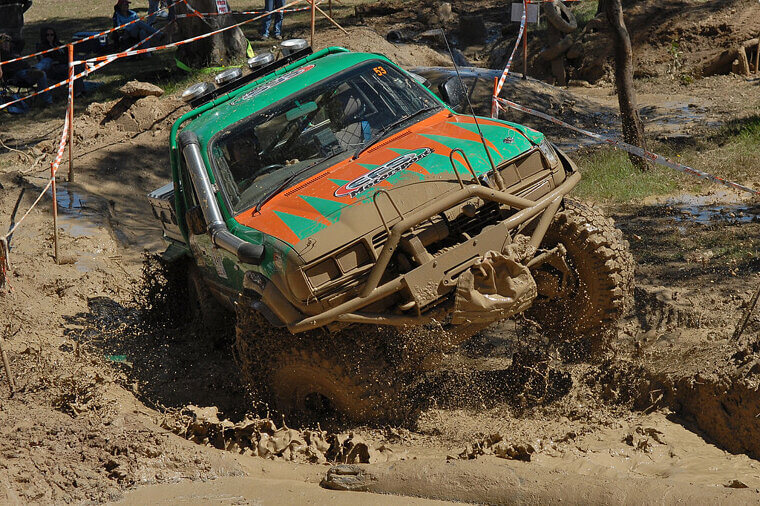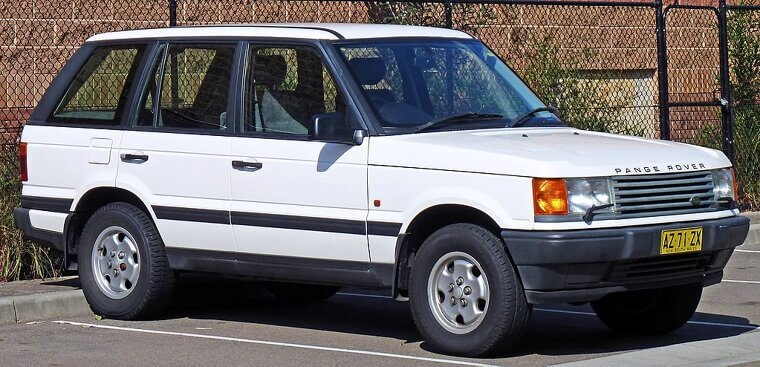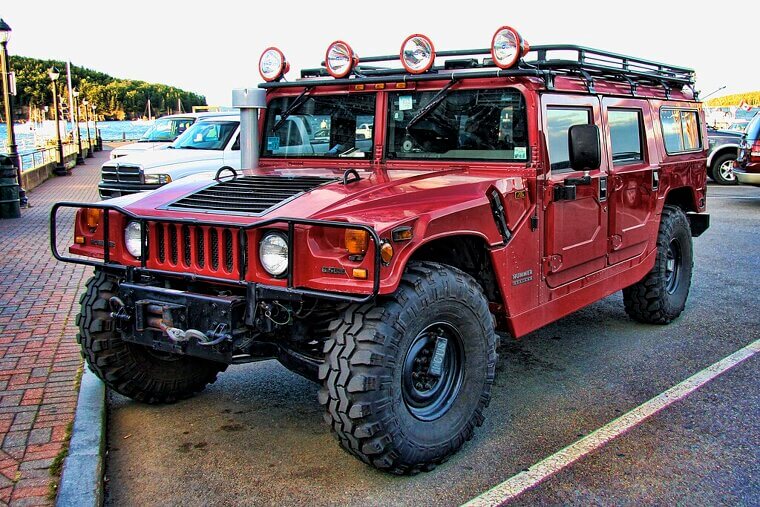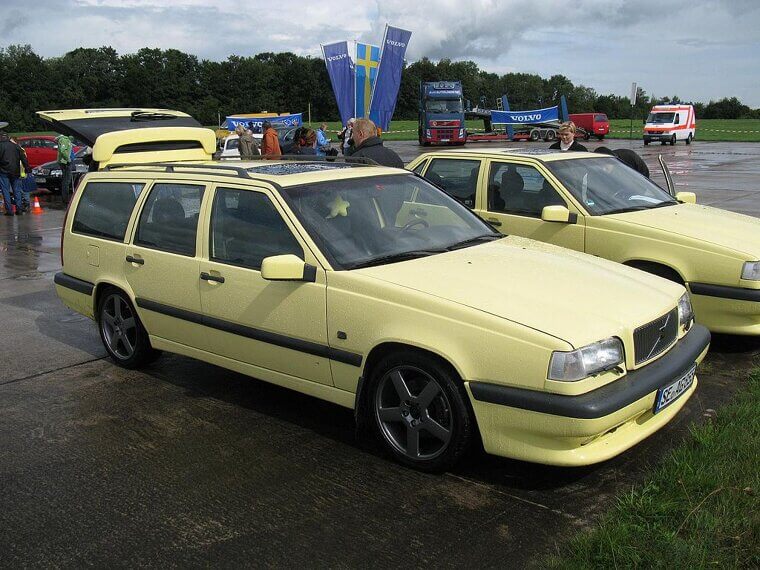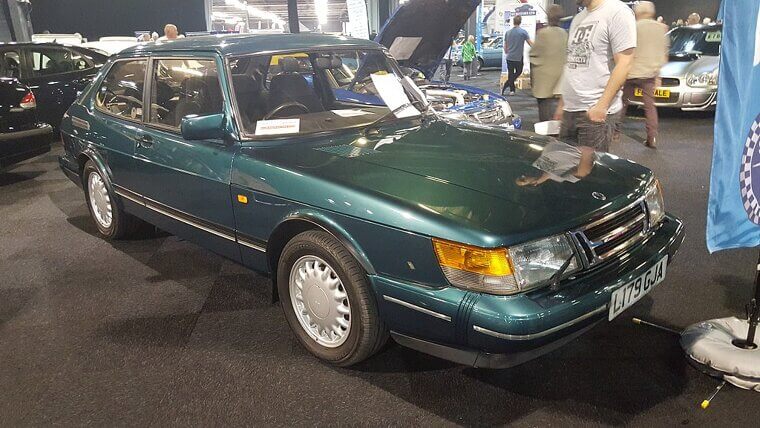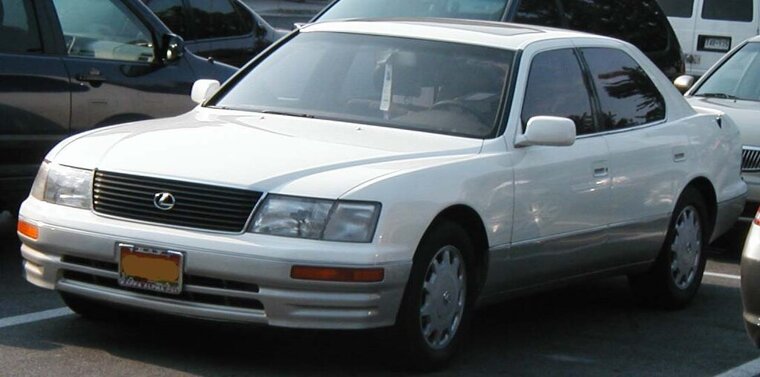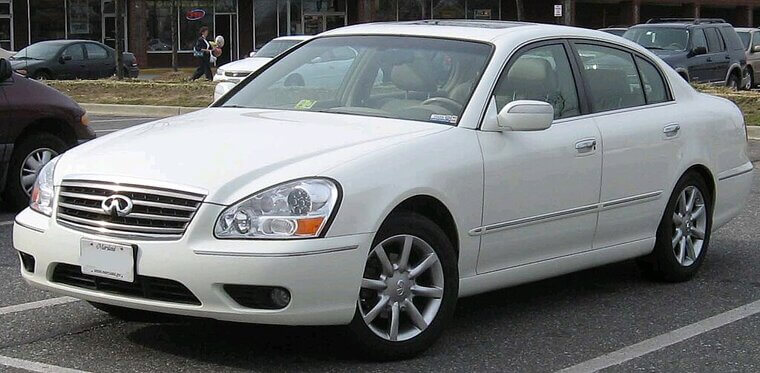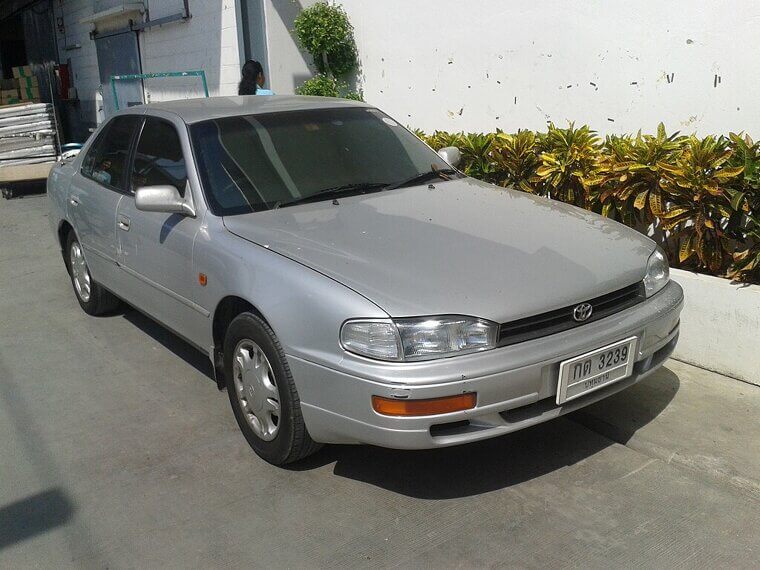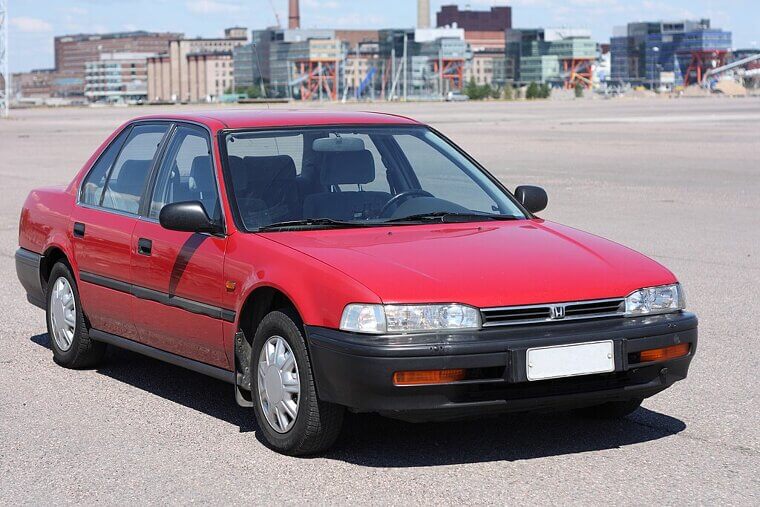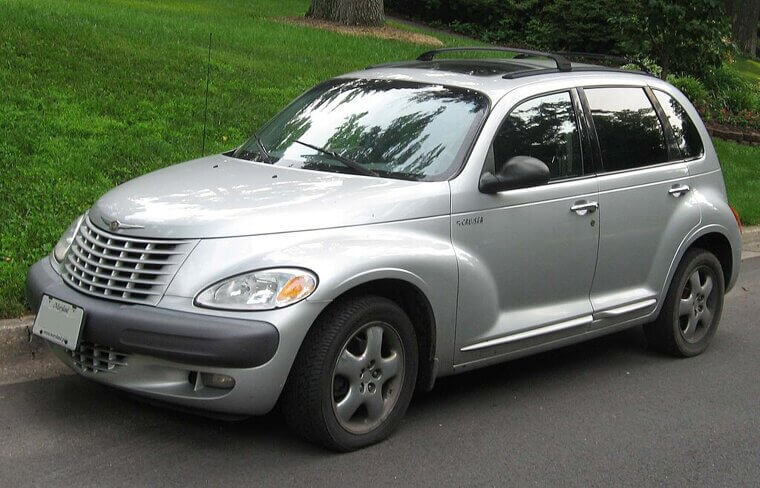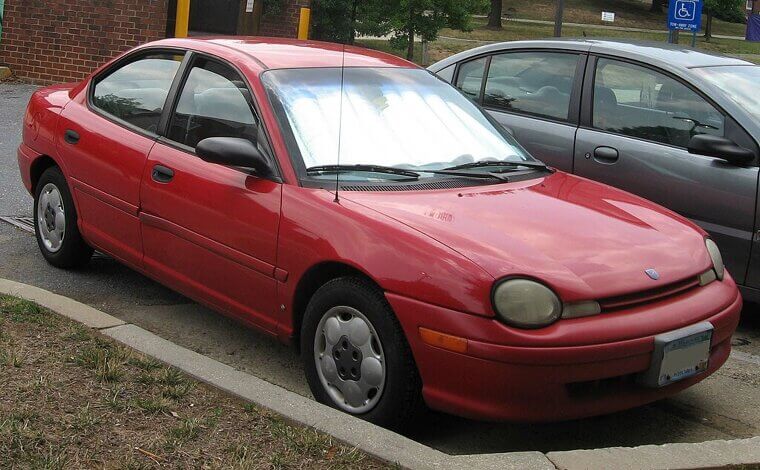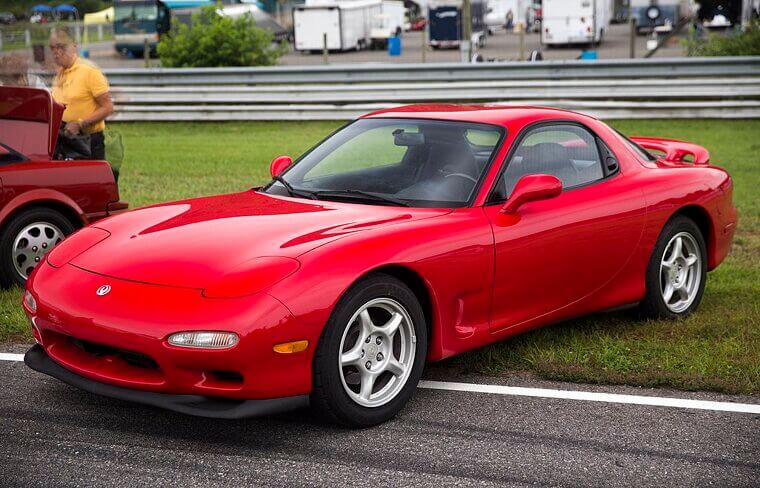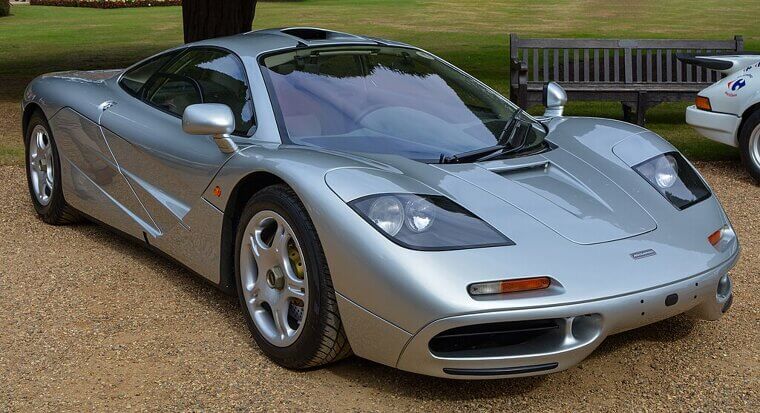Dodge Viper RT/10 (1992-2002)
No ABS, no traction control, no mercy; the Viper was raw American chaos, a muscle car turned up to eleven. Its massive V10 roared like a thunderstorm and its styling looked like a comic book come to life. It was stupidly powerful, impossibly cool, and completely, gloriously unnecessary.
Mazda MX-5 Miata (NA) (1989-1997)
Few cars bottled pure joy like the original Miata. Featherlight, honest, and cheeky as a Britpop anthem, it made every drive feel like a summer evening. Its pop-up headlights winked at you like an inside joke, reminding everyone that driving didn’t need horsepower, just heart.
Toyota Supra Mk4 (1993-2002)
Ah, the poster car of a thousand teenage bedrooms. The Supra Mk4 didn’t just go fast - it looked fast standing still! Its twin-turbo heart and curvy hips made it the darling of tuners and movie stars alike. Before memes, before TikTok, there was the Supra.
Nissan 300ZX (Z32) (1989-2000)
A wedge of wonder from Japan’s golden age! The 300ZX was a futuristic spaceship for the middle class: digital dash, T-tops, and a twin-turbo V6 that hummed like a Blade Runner fever dream. It was overengineered, overstyled, and gloriously over-the-top - just how the ’90s liked it.
Mitsubishi 3000GT / GTO (1990-2001)
This car didn’t just drive - it performed. Active aero, four-wheel steering, pop-up headlights; the 3000GT had more gadgets than a Bond car. It was the tech-nerd’s dream coupe, and when it roared, it felt like dial-up connecting straight to heaven. It was heavy, but totally heroic.
Toyota MR2 (SW20) (1989-1999)
The MR2 was the cheeky little sibling who snuck into the sports car club and stole everyone’s heart. Mid-engined mischief, razor handling, and styling that screamed “future!” It spun like a Beyblade if you weren’t careful, but that was part of its charm.
Subaru Impreza WRX (1992-2000)
This was the rally hero that made mud look fashionable. Boxy, burbly, and blue with gold wheels, the WRX became a cult icon faster than you could say “Colin McRae.” It wasn’t fancy, but it could blast down a gravel road like a caffeinated kangaroo.
Acura NSX (1990-2005)
Honda looked at Ferrari and said, “We can do that, and it’ll start every morning.” The NSX was a revelation: sleek, reliable, and civilised, yet still thrilling. Ayrton Senna helped fine-tune its handling, so naturally it felt like magic. The ’90s never built a purer expression of balance and beauty.
Lancer Evolution VI (1999)
If the Impreza was the hero, the Evo was the antihero - sharper, meaner, and built for chaos. Turbocharged fury with wings to match, it tore through corners like a hornet on an energy drink. The Evo VI was raw kinetic energy, wrapped in an economy car shell.
Honda Civic Type R (EK9) (1997-2000)
The humble Civic went supernova. The EK9 Type R was lightweight, razor-sharp, and powered by a VTEC engine that screamed like an enraged valkyrie, it was proof that precision could outshine power. It was a hot hatch so pure, it practically hummed with youthful energy.
Nissan Skyline GT-R (R32/R33) (1989-1998)
The Godzilla of the ’90s, the Skyline GT-R was monstrous, mythic, and magnificently Japanese. Its all-wheel-drive wizardry and twin-turbo power made it unbeatable on track and unforgettable off it. While America never officially got it, posters and PlayStation made sure everyone wanted it. The legend began here, pixel and piston alike.
Ford Escort RS Cosworth (1992-1996)
A rally rocket in disguise, the RS Cosworth was all wings, whistles, and wildness. That whale-tail spoiler could double as a picnic table, and under the hood lurked a turbocharged menace. It didn’t whisper - it shouted its intentions. It’s the Spice Girls of hot hatches: loud, fast, and iconic.
Peugeot 306 GTi-6 (1996-2001)
The French don’t often get credit for hot hatches, but the 306 GTi-6 was magnifique. Sharp steering, taut suspension, and a gearshift that clicked like a camera shutter; it turned every drive into a Sunday morning masterpiece. No gimmicks, just perfect balance and a dash of Gallic flair.
Volkswagen Corrado VR6 (1991-1995)
The Corrado VR6 was Volkswagen’s quiet rebel - a coupe that looked subtle but sang like a tenor. That narrow-angle V6 purred beautifully, the handling felt telepathic, and the rear spoiler popped up like a party trick. It was the kind of car that never got old.
BMW M3 (E36) (1992-1999)
The E36 M3 was the car that proved performance didn’t need theatrics. It was refined, restrained, and utterly ruthless when pushed. Smooth as silk, sharp as espresso. It became the car for young execs who wanted something practical on weekdays and wild on weekends - the ultimate ’90s dual personality.
Mercedes-Benz SL (R129) (1989-2001)
The R129 SL was what success looked like in the ’90s: understated, elegant, and maybe playing Sade through its premium sound system. Pop the roof down, and suddenly every drive felt like an ad for luxury cologne. It was indulgence done right - powerful but never gauche, timeless yet thoroughly modern.
Porsche 968 (1992-1995)
The Porsche 968 was the last breath of the front-engined era, a swan song sung in perfect pitch. Smooth lines, rear transaxle balance, and one of the best manual gearboxes ever made… It was an enthusiast’s secret handshake. It’s often overlooked, but those who knew, knew.
Chevrolet Corvette C4 (1984-1996)
America’s sweetheart grew up in the ’90s, sharper, sleeker, and a lot more confident. The C4 looked like it belonged in an arcade racing game, and behind the digital dash, it kind of felt like one too. It was the Corvette of optimism, selling the dream of speed.
Ford Mustang SVT Cobra (1993-1998)
The Cobra brought credibility back to the Mustang badge. It had muscle-car grunt, modern suspension, and just enough refinement to make you forget the ’80s ever happened. With its flared nostrils and throaty exhaust, it was pure high school hero energy. It was the car everyone wanted to borrow.
Pontiac Firebird Trans Am WS6 (1996-2002)
It had the hood scoops, the thunderous V8, and the attitude of a WWE wrestler in aviators. The Trans Am WS6 was unapologetically loud - it was the last gasp of rock ’n’ roll before the millennium turned digital. It didn’t care about subtlety; it cared about burnouts.
Jeep Cherokee XJ (1984-2001)
The Cherokee XJ was the original “cool parent” SUV. Boxy, dependable, and ready for anything, it made you believe you could conquer the world (or at least a muddy campsite). It looked like a brick, but it was a brick that could climb mountains.
Ford Explorer (1991-1999)
The Explorer was suburban royalty that didn’t just define the family SUV - it invented it. Whether you were heading to soccer practice or the Grand Canyon, it said, “We’re going places.” It was the ’90s dream in four-wheel form: practical, plush, and proud of its cassette deck.
Toyota Land Cruiser 80 Series (1990-1997)
If the ’90s had a global ambassador, it’d be this. The 80 Series was unstoppable; the SUV that made even the Sahara look like a Sunday drive. Comfortable enough for diplomats, tough enough for daredevils. It was prestige without pretense, a rolling tank in a nice suit.
Range Rover P38A (1994-2002)
The P38 was all about posh adventure. You could cross a river and arrive at the opera looking impeccable. It had more electronics than a RadioShack clearance sale and just as many gremlins, but oh, the charm! It was a British stiff upper lip on off-road steroids.
Hummer H1 (1992-2006)
The H1 wasn’t just a car - it was a statement. Massive, menacing, and gloriously unnecessary. Driving one felt like declaring war on subtlety. Born from the Humvee, it didn’t fit in parking spots or quiet conversations. You didn’t drive it; you commanded it.
Volvo 850 T5-R (1995-1997)
A fast wagon? It shouldn’t have worked, but it did - brilliantly. The T5-R was a Swedish missile in a dad car disguise. Yellow paint, turbo power, and boxy coolness made it the ultimate sleeper. It was the car for practical people who liked chaos in moderation (and maybe a little mischief).
Saab 900 Turbo (1994-1998)
Saab’s 900 Turbo was eccentric elegance. Quirky key placement, jet-inspired styling, and a turbo whistle that could charm an iceberg, it was the thinking person’s sports car - fast, safe, and undeniably Swedish. It’s the kind of car novelists would drive to escape writer’s block… or their publisher.
Lexus LS400 (1990-1994)
The LS400 arrived like a polite revolution. Smooth, silent, and surgically precise, it embarrassed the Germans without ever raising its voice. It was the luxury sedan for people who preferred whispering to bragging. The world took notice, and luxury would never be the same again.
Infiniti Q45 (1990-1996)
A Big V8, minimalist design, and the confidence of a CEO who wears sneakers to board meetings, the Q45 was sophisticated without being stuffy, powerful without being pretentious. The car quietly asked, “Who needs badges when you’ve got brilliance?”
Toyota Camry XV10 (1991-1996)
The car your parents bought and you secretly miss! Dependable, quiet, and smoother than most pop ballads of the time, the Camry wasn’t flashy, but it was everywhere, silently winning the reliability Olympics. For many, it was their first car, a faithful sidekick that just kept showing up.
Honda Accord (1994-1997)
The ’90s Accord wasn’t flashy - with its smooth lines, reliable drivetrain, and a quiet confidence that made it the standard-bearer for mid-size sedans, it was just right. You didn’t just drive it; you respected it. It was the car that got you through high school, college, and maybe even your first real job.
Chrysler PT Cruiser Concept (1999)
Before it became a meme icon, the PT Cruiser concept was pure imagination. Retro curves met futuristic thinking, turning a compact car into a rolling storybook. Bold, brash, and instantly recognizable, it captured the playful, optimistic spirit of the decade.
Dodge Neon (1994-1999)
The Neon was the scrappy underdog: affordable, punchy, and full of energy. It brought compact performance to the masses, letting first-time drivers feel like they’d arrived. Tiny, nimble, and surprisingly spirited, it was a car that reminded everyone that even small packages could deliver big fun.
Mazda RX-7 (FD3S) (1992-2002)
Sculpted like a predator with a rotary heart that whirred like a jet, the FD RX-7 was the ultimate Japanese sports car fantasy. Lightweight, agile, and absurdly capable, it was the car for people who chased adrenaline - on back roads or in video game fantasies.
McLaren F1 (1992-1998)
The ultimate ’90s unicorn, the McLaren F1 wasn’t just a supercar - it was the benchmark supercar. Three seats, a naturally aspirated V12, and a speed that made your heart catch, it was the pinnacle of engineering, a dream machine that reminded the world that the ’90s created legends.

